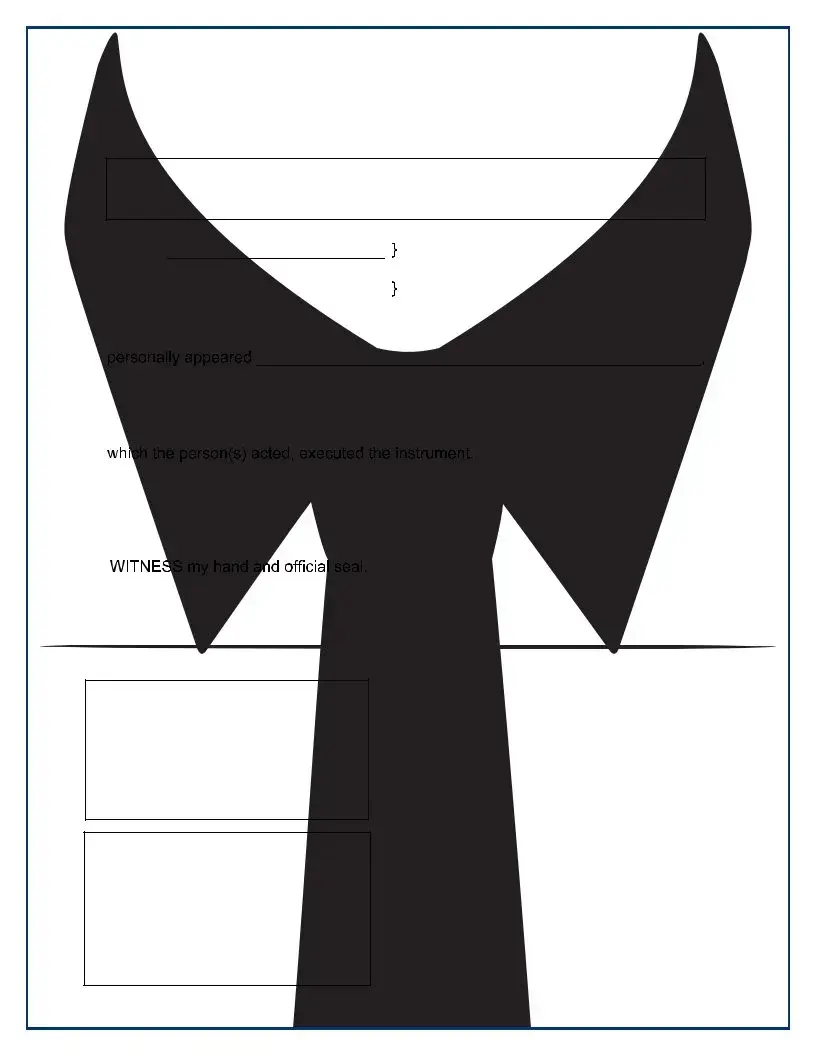The Jurat with Affiant Statement is a document that bears close resemblance to the California Acknowledgement Certificate in function and purpose. Similar to the Acknowledgement Certificate, a Jurat is used to verify the signer's presence before a notary or authorized official, but with a key difference: it requires the signer to swear or affirm the truthfulness of the document's contents. This formality is pivotal in legal affidavits and other declarations, ensuring the signer acknowledges the document under oath or affirmation, offering an additional layer of veracity.
A Power of Attorney (POA) shares certain procedural similarities with the California Acknowledgement Certificate, notably in the critical role a notary public plays in validating the identity of the person granting powers. The POA allows an individual to assign decision-making authority to another in specific or broad matters. For the document to gain its intended legal effectiveness, it must often include a notarial acknowledgment, certifying that the principal appeared personally before the notary and acknowledged executing the document voluntarily for its stated purpose.
The Notary Certification of Copy is another document analogous to the California Acknowledgement Certificate, particularly in the aspect of notarization. This certification is used when a notary public is required to attest that a photocopy of an original document is complete, accurate, and unaltered. Similar to the acknowledgment, this process involves verifying the identity of the individual presenting the document, although the focus is on the authenticity of the copy rather than the act of signing.
A Mortgage Deed, often requiring notarization as part of its execution, also parallels the California Acknowledgement Certificate. In the context of real estate transactions, the Mortgage Deed secures a real property as collateral for a loan. The notarization process, akin to that in an acknowledgment, serves to verify the mortgagor's identity and ensure that the mortgagor signs the deed voluntarily, affirming the document's intention and validity in legally binding the property to the loan terms.
Trust Certification documents share a mutual characteristic with the California Acknowledgement Certificate, especially in the authenticity and identity verification phases carried out by a notary. When part or all of a trust is required to be presented for legal or financial transactions, a Trust Certification—certifying the trust's existence, the trustee's authority, and the trust terms—may be utilized. Notarization confirms the trustee's identity and their acknowledgment of the document in their official capacity.
The Marriage License Application, while distinct in its application, often necessitates a form of official acknowledgement similar to the California Acknowledgement Certificate process. Applicants must appear before a licensed official to verify their identity and the truth of the information provided. Though not identical, this procedure embodies the essence of acknowledgment: affirming the identity of the individuals and the veracity of their declarations, underpinning the legal foundation of civil marriage.


